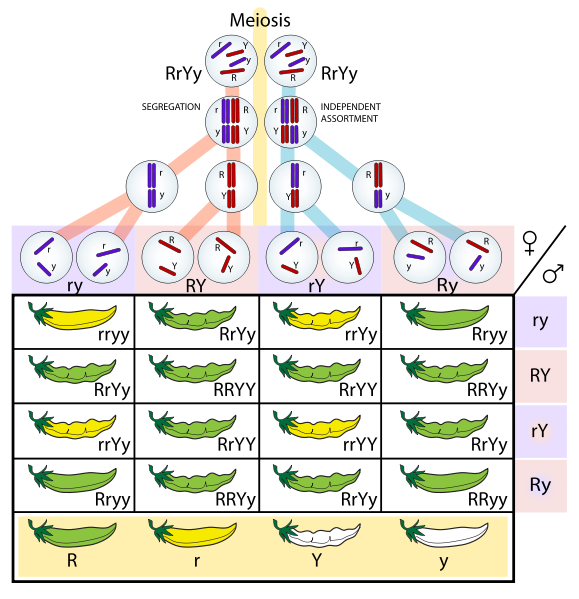Just want to refresh back basic genetic
Gregor Mendel (July 20, 1822-January 6 1884)
Father of Modern genetic
Mendel 1st Law- Law of seggregation
The Law of Segregation states that when any individual produces gametes, the copies of a gene separate so that each gamete receives only one copy. A gamete will receive one allele or the other. In meiosis, the paternal and maternal chromosomes get separated and the alleles with the traits of a character are segregated into two different gametes.
OR
The two coexisting alleles of an individual for each trait segregate (separate) during gamete formation so that each gamete gets only one of the two alleles. Alleles again unite at random fertilization of gametes.
Mendel 2nd Law -Law of independent of assortment
The Law of Independent Assortment, also known as "Inheritance Law" states that alleles of different genes assort independently of one another during gamete formation. While Mendel's experiments with mixing one trait always resulted in a 3:1 ratio (Fig. 1) between dominant and recessive phenotypes, his experiments with mixing two traits (dihybrid cross) showed 9:3:3:1 ratios (Fig. 2). But the 9:3:3:1 table shows that each of the two genes are independently inherited with a 3:1 phenotypic ratio.
Mendel concluded that different traits are inherited independently of each other, so that there is no relation, for example, between a cat's color and tail length. This is actually only true for genes that are not linkedto each other.Independent assortment occurs during meiosis I in eukaryotic organisms, specifically metaphase I of meiosis, to produce a gamete with a mixture of the organism's maternal and paternal chromosomes. Along with chromosomal crossover, this process aids in increasing genetic diversity by producing novel genetic combinations.

Table showing how the genes exchange according to segregation or independent assortment during meiosis and how this translates into Mendel's laws.
Dihybrid cross

The phenotypes of two independent traits show a 9:3:3:1 ratio in the F2 generation. In this example, coat color is indicated by B (brown, dominant) or b(white) while tail length is indicated by S (short, dominant) or s (long). When parents are homozygous for each trait ('SSbb and ssBB), their children in the F1generation are heterozygous at both loci and only show the dominant phenotypes. If the children mate with each other, in the F2 generation all combination of coat color and tail length occur: 9 are brown/short (purple boxes), 3 are white/short (pink boxes), 3 are brown/long (blue boxes) and 1 is white/long (green box).
Sources: Wikipedia; Mendel's law




















0 comments:
Post a Comment